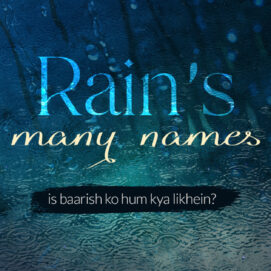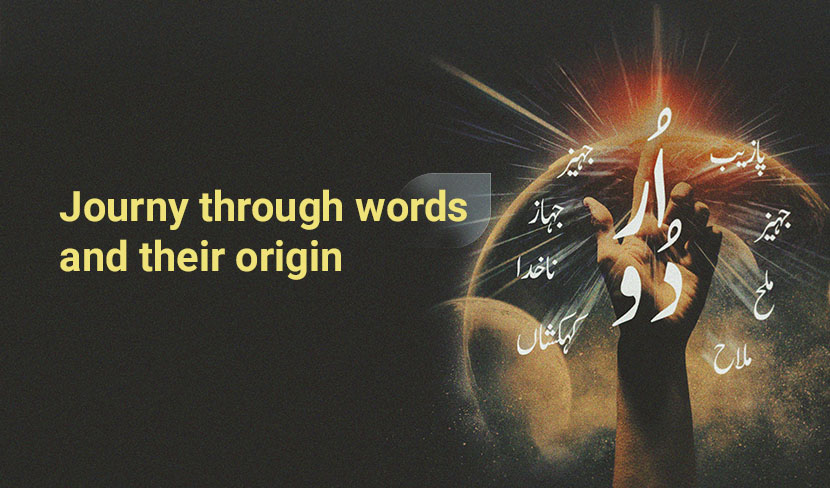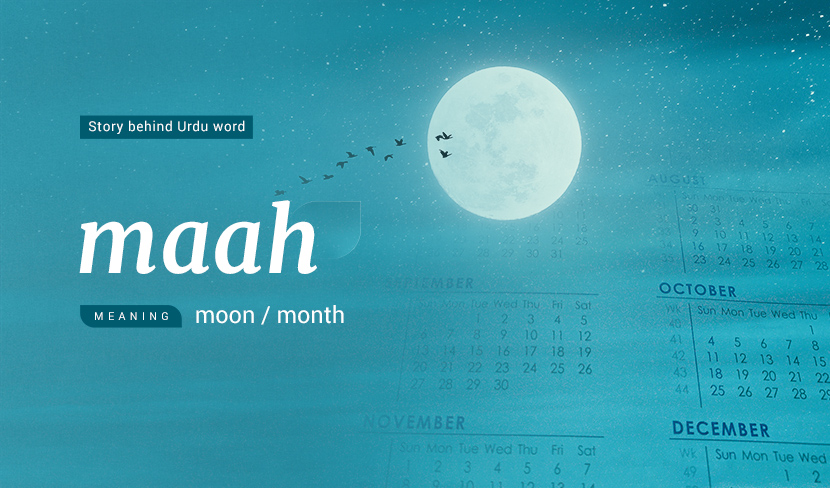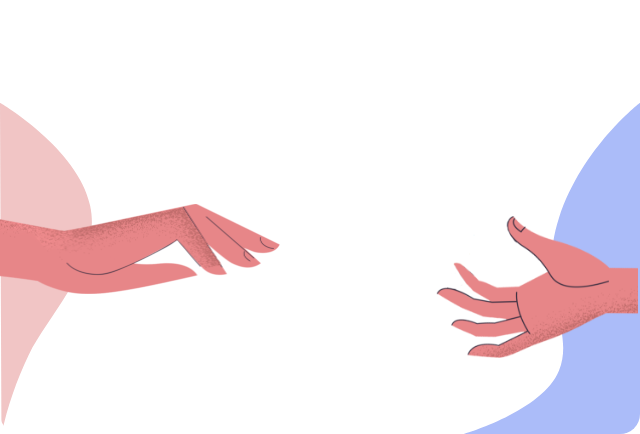अधिक खोजे गए शब्द
सहेजे गए शब्द
खिस्यानी बिल्ली खम्बा नोचे
जिसे क्रोध आ रहा हो वह अपनी खीझ या क्रोध दूसरों पर उतारता है, लाचारी में आदमी दूसरों पर क्रोध करता है, लज्जित व्यक्ति दूसरों पर अपनी लज्जा उतारता है, निर्बल की खीझ
कोशिश
कोई काम करने के लिए विशेष रूप से किया जानेवाला प्रयत्न, मेहनत, दौड़ धूप, प्रयत्न, प्रयास, चेष्टा, उद्योग, श्रम, उद्यम, उपाय, परिश्रम
आठ बार नौ त्योहार
सुख-सुविधा और आराम का शौक़ या लगन ऐसा बढ़ा हुआ है कि युग और समय उसको अल्प व्यय नहीं करने देता
चमनिस्तान
ऐसा बाग़ जहाँ फूल ही फूल हों, ऐसी जगह जहाँ दूर तक फूल ही फूल और हरा भरा नज़र आए, वाटिका, चमन, बाग़
दादरा
संगीत में एक प्रकार का चलता गाना (पक्के या शास्त्रीय गानों से भिन्न), एक प्रकार का गान, एक ताल
Haan: All about Here, There, and Everywhere!
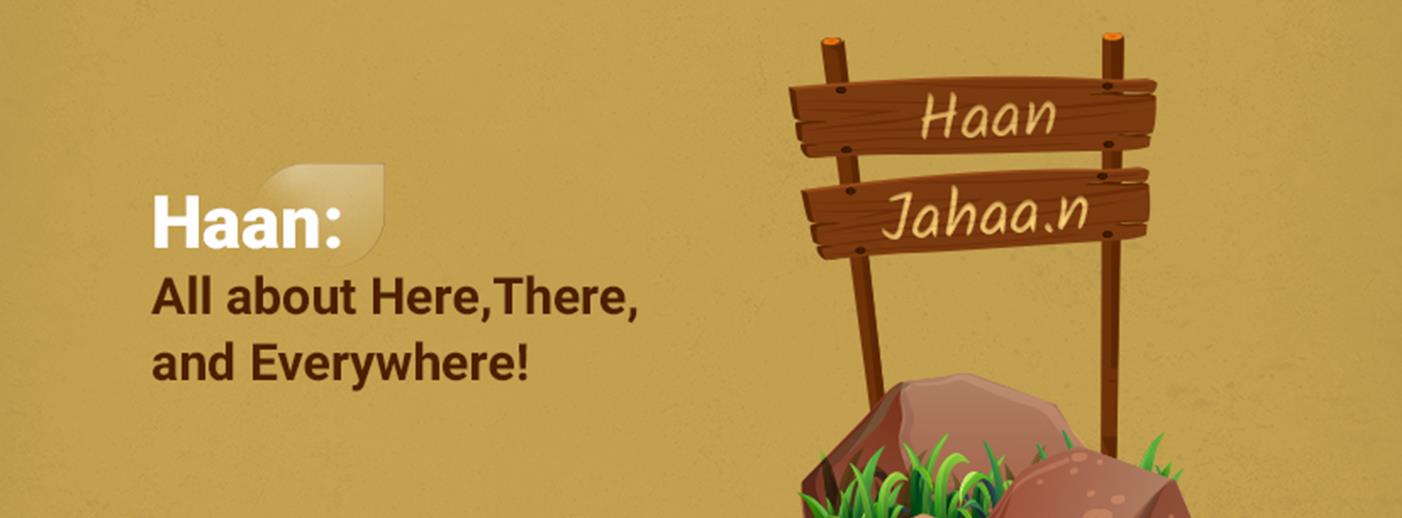
kaabe me.n jaa.n-ba-lab the ham duurii-e-butaa.n se
aa.e hai.n phir ke yaaro ab ke KHudaa ke haa.n se
Mir Taqi Mir
Words morph, pronunciations whirl, expressions change, and meanings shift, but rarely do we come across utterances that have been so drastically revamped that modern-day speakers need a reintroduction to what they originally sounded like.
Today’s blog features one such word that we have long embraced in our Roz-Marra, but differently.
Haan, commonly known as yes, is a word well known and understood. But there is another archaic side of it that needs a revisital, a recountal!
Urdu-wise readers would’ve already identified it in Mir’s couplet above - KHudaa ke haa.n se, meaning from God’s place, i.e., The Holy Kaaba. For Urdu-light folks, there’s a whole lot to dive into!
In its original sense, ‘Haan’ means ‘here’, or ‘this place’. The word is actually a corrupted form of the Sanskrit Sthana (place). Interestingly, Sthana literally means the place where one stands, or remains, i.e., home or dwelling. On similar lines, the word mirrors Qiyam in Urdu, which also means standing, but also extends to mean a place of stay. That’s why we commonly hear in Urdu, “Un kaa qiyam in dino.n fulaan jagah hai”.
At this point, it’s also good to take note of the Persian side of things, because eventually, this will allow us to draw a close parallel on how two different words have undergone a similar evolution.
Remember our Jaa blog? If you do, you’d know that Jaa means place in Persian. The same turns into iin-jaa (here) and aan-jaa (there). Here’s a - personal favorite - couplet by Urfi Shirazi who masterfully versifies these two words:
Mohabbat sham’-e-bazm-e-quds-o-maa parwaana-e-bairuu.n
Che haal-ast in nami-daanam, charaagh aanjaa-wa-duud iinjaa
Passion, the beacon of gathering of sacredness, and I, the firefly on the out
What state this, I know not; the burning lamp there, the smoke here
Now with the background set, let’s return home. You must have heard, ii-haa.n and uu-haa.n (without the nasalization) for ‘here’ and ‘there’ in Awadhi, Braj, and Bhojpuri. The lineage of these two words can also be traced back to the two Persian words above. But what’s even more interesting is that iin and aan later morphed into ya-haa.n and wa-haa.n.
From a script standpoint, Urdu readers would of course know ‘ii’ and ‘uu’ are written the same as ‘ya-’ and ‘wa-’. Later, these vowels turned into semi-vowels, as it so often happens. Case in point, the word Musawwada – predominantly pronounced as Masauda – is a result of this very kind of digression.
The very same kind of thing happens with Jahaa.n that’s formed of the Sanskrit Yat and Sthana, meaning that place (unknown), and Tahaa.n, formed of Tat and Sthana, meaning that place (known).
As a quick rundown, thus far we’ve figured out the word’s full rationale of evolution - Haan coming from the Sanskrit Sthana; Ya- and Wa- diluting from the Persian iin and aan; Ta- and Ja- from Sanskrit Tat and Yat. Now is a good place to dive into the question: ‘kahaan’ kahaan se aaya?
Well, it comes from the Sanskrit interrogative Kim (किम्), which later became Ka in Hindustani, and Ki in Punjabi, forming Kahaan and Kitthe in the two languages respectively. Additionally, the ‘th’ sound that you hear in Punjabi again finds its roots in Sthana.
Interestingly, Kahaan’s Persian twin, namely Kujaa, is also inspired by Kim, first molding into Kuu, meaning where/who, and later shortening to just Ku and clubbing with Jaa.
Here’s a fine verse by Ismail Merathi, demonstrating fine skill in wordplay:
kujaa hastii bataa de tuu kahaa.n hai
jise kahte hai.n bismil niim-jaa.n hai
On that note, let us know if this piece was informative and if you’d have more yahaan-wahaan ki baaten about these words!
Delete 44 saved words?
क्या आप वास्तव में इन प्रविष्टियों को हटा रहे हैं? इन्हें पुन: पूर्ववत् करना संभव नहीं होगा
